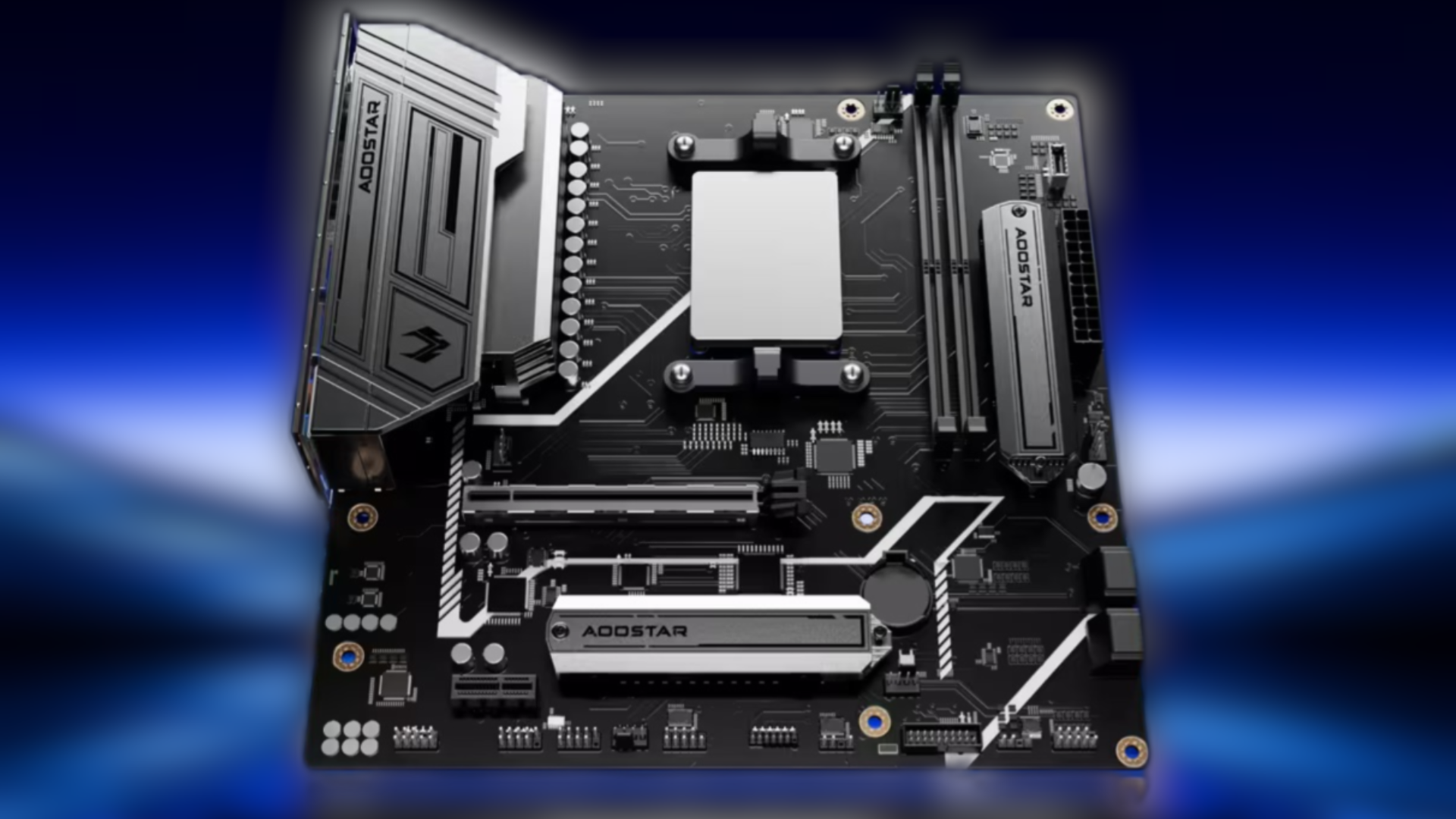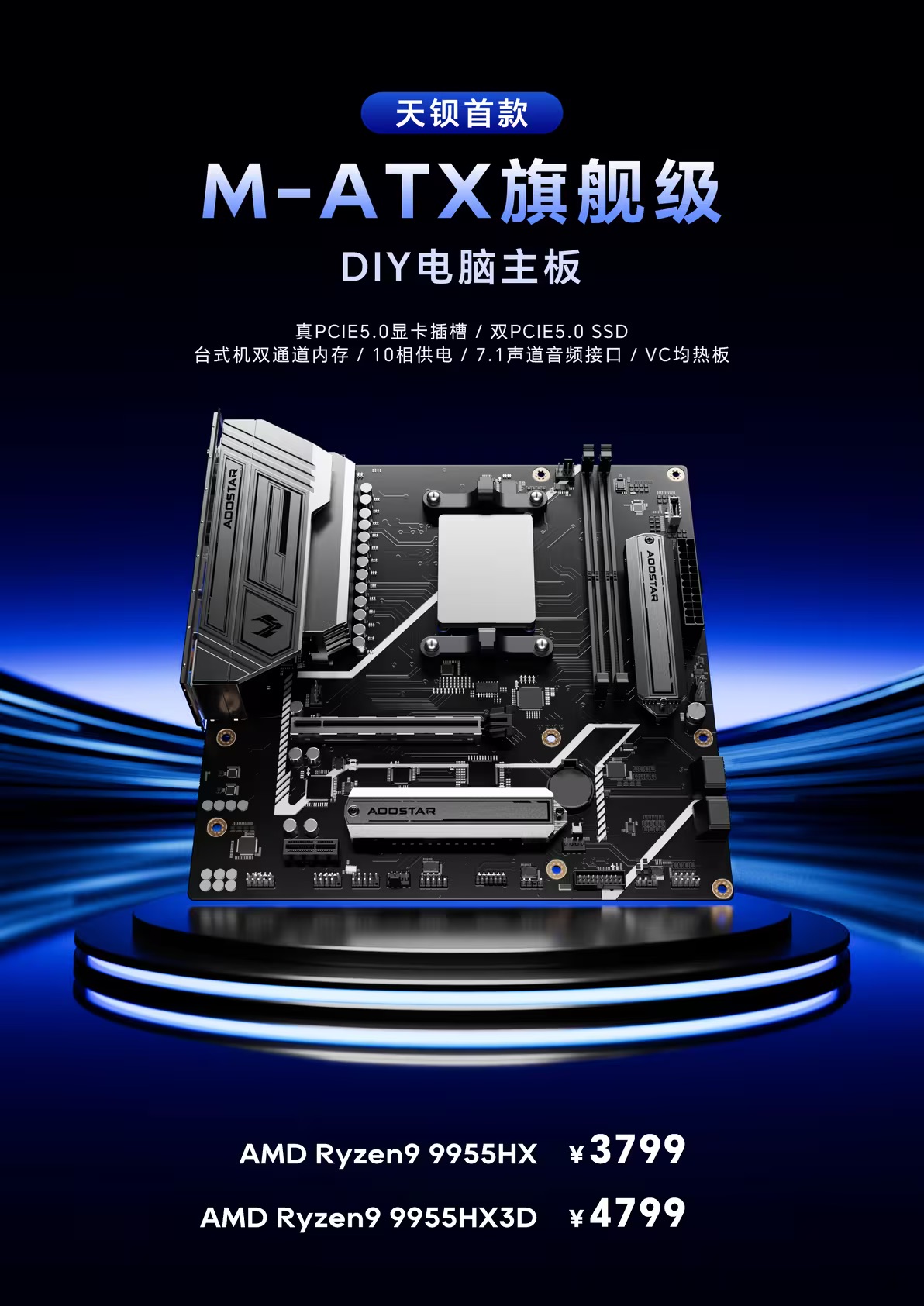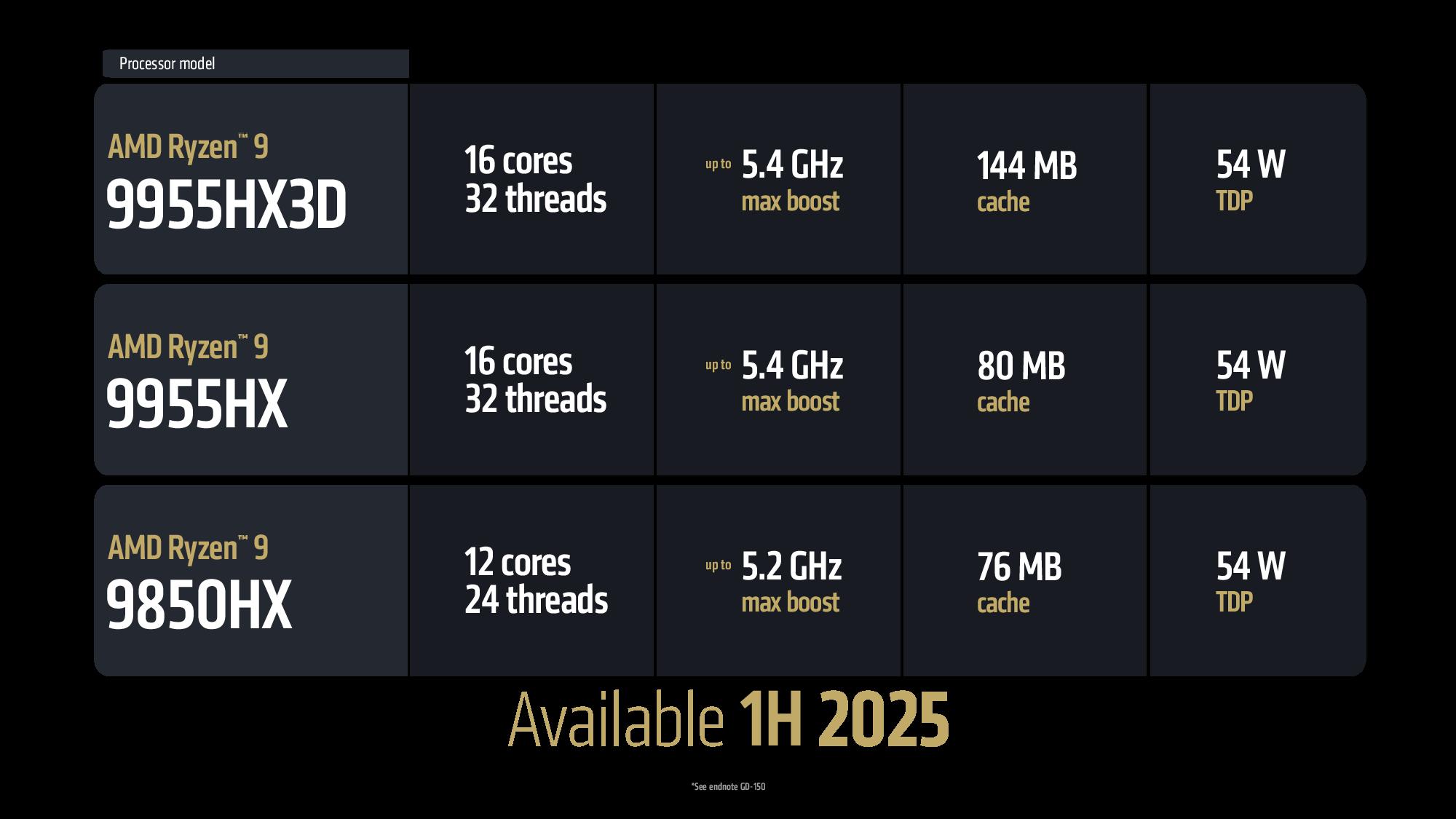AMD unleashes the power of mobile Fire Range chips on a desktop PC motherboard — Ryzen 9 9955HX and Ryzen 9 9955HX3D debut on Aoostar board
What's better than a motherboard with a soldered high-end mobile AMD Ryzen CPU?

When we talk about mobile chips, it's usually within the confines of a laptop chassis, or something like a gaming handheld. Very rarely does a SoC break free of its portable enclosure, but when it does, it's seldom as interesting as this. Tianba (via momomo_us), a Chinese PC hardware brand owned by Aoostar, has just unveiled its new MoDT (mobile on desktop) motherboards, which feature top-of-the-line mobile CPUs designed for use in a tower configuration. It comes in two options: either a Ryzen 9 9955HX or a 9955HX3D—the flagship mobile gaming CPU from AMD right now.
For some context, yes; desktop motherboards equipped with mobile processors (meant initially for laptops) are a thing, and they're pretty common in China. The appeal of such a setup largely boils down to the cost savings of a mobile chip. Moreover, any processor in a laptop is usually thermally constrained, even with the most extravagant cooling, so giving it the proper desktop treatment with an air or liquid cooler will unlock the full potential of the SKU.
The downside, of course, is that you're locked in forever. The CPU is soldered onto the motherboard, so if you ever plan to change it, you will have to replace your entire motherboard with a new one. That being said, every other part of Tianba's motherboard is otherwise standard. First of all, it's in the mATX form factor, so it's relatively compact, and the design looks sleek with silver accents across the black PCB.

There's a full-length x16 PCIe 5.0 slot for the GPU, along with two Gen5x4 M.2 slots for the SSDs. The motherboard supports dual-channel memory with its two DIMM slots, and Tianba is advertising a vapor chamber heatsink with "strong heat dissipation." More importantly, there's a 10-phase VRM which puts this motherboard in line with most midrange B650s you can get off the shelf. The company did not provide further details on the connectivity, so we are unsure how many fan or RGB headers are onboard.
Returning to the chip options for this, the Ryzen 9 9955HX and 9995HX3D are essentially identical, apart from the 3D V-Cache found in the latter. They're 16-core, 32-thread CPUs with 54W TDPs and boost clocks of up to 5.4GHz. The main difference lies in the amount of cache, as the 995HX3D features 144 MB of L3 cache, while the 9955HX has only half of that at 72 MB. But even that's plenty, as in most tasks, these chips will be neck-and-neck with each other while comfortably beating every other gaming CPU.

This isn't even the first time we've seen an X3D processor make it to the MoDT platform, as Minisfoum launched an ITX motherboard featuring the Ryzen 9 7945HX3D just this year. Previously, we had Raptor Lake SKUs in this form factor, and even major system integrators like Lenovo and Asus have ventured into this market with desktop pre-built systems powered by mobile chips.
Tianba has priced its new MoDT motherboard at 3,799 Yuan, or $530 USD, and that's for the 9955HX version. The 9955HX3D model will cost you 4,799 Yuan, which translates to approximately $670 USD. If we examine the desktop counterparts for these chips, you'll save a considerable amount. The Ryzen 9 9950X launched at $649, but you can now find it for as low as $434. Meanwhile, the 9950X3D's suggested retail price is $699, and it typically remains at or around that price.
Get Tom's Hardware's best news and in-depth reviews, straight to your inbox.
Add to this a decent B650 motherboard, such as the MSI Tomahawk, which costs around $200, and you're already surpassing the price of Tianba's MoDT offerings. Of course, they are mobile chips at the end of the day—even with all the cooling and power in the world, the desktop counterpart will be faster—but not everyone needs that kind of performance and would rather settle for a bundle that's close enough.
Follow Tom's Hardware on Google News to get our up-to-date news, analysis, and reviews in your feeds. Make sure to click the Follow button.

Hassam Nasir is a die-hard hardware enthusiast with years of experience as a tech editor and writer, focusing on detailed CPU comparisons and general hardware news. When he’s not working, you’ll find him bending tubes for his ever-evolving custom water-loop gaming rig or benchmarking the latest CPUs and GPUs just for fun.
-
bit_user Cost savings are one reason to use BGA processors in a desktop, but I think the most compelling reason is that many laptop SoCs are power-optimized much more than their desktop counterparts. This makes them a win for cool & quiet computing, as long as they can be fitted with a sufficiently large heatsink.Reply
According to Phoronix' recent testing, Framework's Ryzen AI Max draws a mere 12.9W from the wall, at idle. By desktop standards, that's very impressive for a machine of such power.
https://www.phoronix.com/review/framework-desktop-power -
-Fran- At those prices, these are an absolute bargain. That's a lot of CPU with a decent platform to come with. Specially the X3D model.Reply
Nice.
Regards. -
usertests It's always interesting to see the price gap between X3D and non-X3D. In this case, it's about $140, and you're still getting the flawed heterogeneous cache.Reply
The industry could use Nova Lake with bLLC to keep AMD in check. -
ezst036 Its quite a shame that the laptop chips don't also get cross-offered in the standard AM5 socket configuration.Reply -
TerryLaze Reply
Is that even comparable?!bit_user said:Cost savings are one reason to use BGA processors in a desktop, but I think the most compelling reason is that many laptop SoCs are power-optimized much more than their desktop counterparts. This makes them a win for cool & quiet computing, as long as they can be fitted with a sufficiently large heatsink.
According to Phoronix' recent testing, Framework's Ryzen AI Max draws a mere 12.9W from the wall, at idle. By desktop standards, that's very impressive for a machine of such power.
https://www.phoronix.com/review/framework-desktop-power
I would guess that a lot of any savings would come from how the whole system is set up. I mean if this mobo is juicing the cpu as much as it can to get as much performance out of it as possible then the soc itself has little chance of changing anything. -
bit_user Reply
Strix Point hasn't yet been ported to desktop, as far as I know, but you can buy Ryzen 8000 models that are monolithic dies, originally designed for laptops.ezst036 said:Its quite a shame that the laptop chips don't also get cross-offered in the standard AM5 socket configuration.
These Fire Range models are basically desktop Ryzen 9000 CPUs in BGA packaging. -
usertests Reply
Dragon/Fire Range are literally the desktop CPUs in BGA packaging.ezst036 said:Its quite a shame that the laptop chips don't also get cross-offered in the standard AM5 socket configuration.
If you wanted to get the same experience, you could use Ryzen Master or other tools to limit the TDP. You can take the 9950X3D/9950X down from 170W to something closer to Fire Range's 54W. A lot of performance could be left on the table but I know some people are happy to do this.
Desktop APUs are another story. Maybe we'll get Strix/Gorgon Point within the next year, or Medusa Point after that.
Strix Halo and future 256-bit APUs = fat chance. It's MODT or nothing. -
bit_user Reply
Bad example. Its US price is only that high because it's a specialty server product aimed at a relatively captive market willing to pay that much for it.baboma said:Here's a real-world case of pricing difference in China vs US. The Maxsun Dual Arc Pro B60 (24GBx2) is reportedly priced at $1200 (converted from RMB). When a redditor reached out to get a US price quote, it's $2999.
Either you didn't read your own source or you've somehow missed the point of citing an example, which is normally done as a data point to mark an overall trend. Either way, citing an outlier in this context is nonsensical.baboma said:...
"Granted that this particular markup is likely an outlier,'
...
Well, they're already popular in the mini-PC segment. I can certainly foresee them gaining traction a bit further up the stack, but socketed CPUs have real benefits for some users.baboma said:My prediction is that MoDT will be a popular platform going forward, eclipsing the desktop. Seeing Strix Halo miniPCs as proof-of-concept, strong iGPU (or NPU) + gobs of system RAM will be viable consumer "AI in a box" PCs. -
thestryker I've thought for a while if they could/would open up memory tweaking (at least proper EXPO/XMP support) mobile on desktop could have a broader appeal. There's a lot positive about something that provides what's important to the majority of users with minimal hands on to make it happen. While these aren't for me I would love to see continued development of these platforms especially if we start seeing more Strix Halo type APUs.Reply -
Amdlova WOW :D IF it draw close to 12.9W will be a nice machine to have.Reply
Got My old mac Mini 2014 to work, forcing it to use only 5w TDP some times show at the wall 4.8w